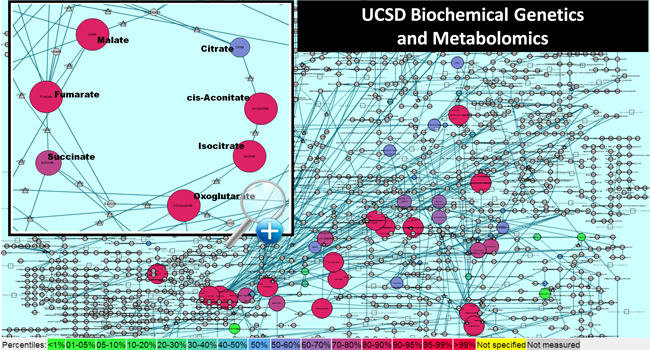UCSD Biochemical Genetics Laboratory
Metabolomic Functions
Description
- Comprehensive Analytics
The field of Biochemical Genetics has essentially been developing metabolomics for decades, seeking to acquire as comprehensive as possible a set of analytes from tissues and body fluids metabolites and applying pattern recognition to discern interactions among metabolic pathways. Modern metabolomics draws upon improved instrumentation to measure different classes of chemicals in the same runs (eliminating the artificial distinction among 'amino acids' and 'organic acids' etc. which really were based on differences of extraction and detection) and upon improved numerical and statistical methods in place of simple pattern recognition.
- Quantification
Traditional Biochemical Genetics has depended upon quantification. Although many laboratories issue qualitative results for organic acid analysis, our laboratory stresses quantitative results so that results can be compared day-to-day and across varying conditions and states of health. Most metabolomic datasets need to be run with large groups of samples, comparing peak areas between two groups of measures, acquired at the same time with the same machine settings sand conditions. Quantitative metabolic profiling, however, in principle allow single runs to be compared to amalgamated reference ranges (for known analytes).
- Reference
The UCSD Biochemical Genetics Laboratory has many years of experience and tens of thousands of samples to provide reference ranges for analytes. Accordingly, even individual specimens(or sets of specimens from individual patients) may be related to reference values to give perspective on changes in flux within pathways-- although the most meaningful approach is to compare groups (e.g. with and without treatment) to determine changes in metabolism.
